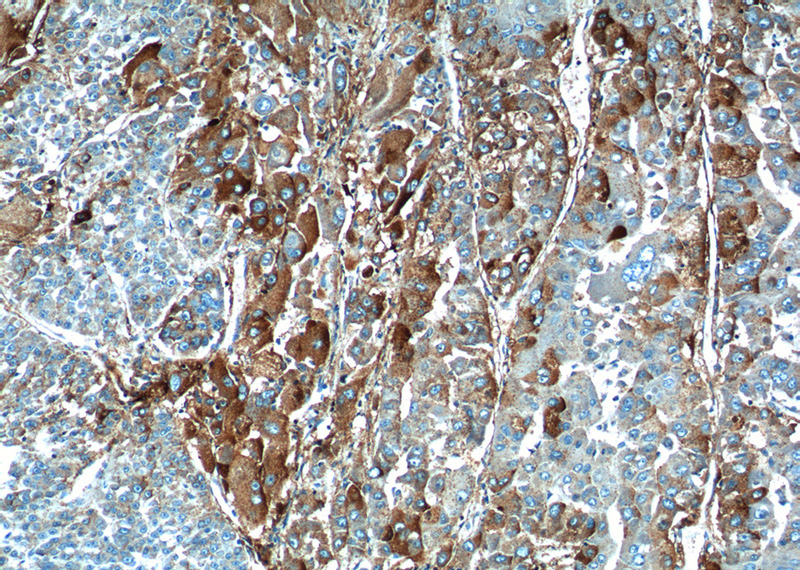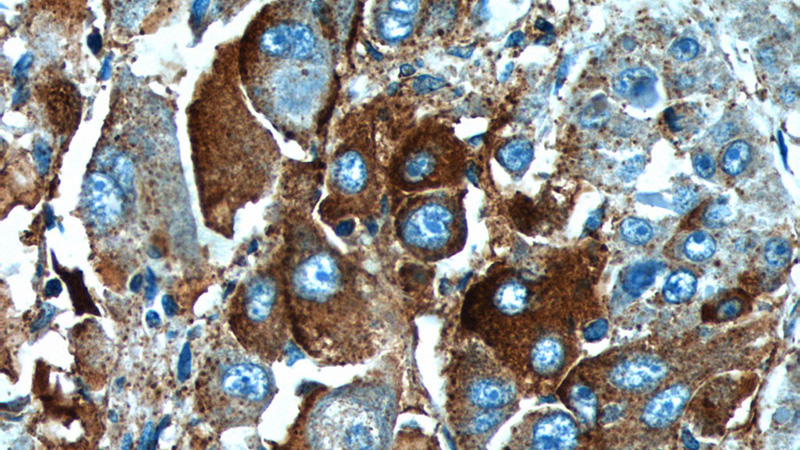-
Product Name
HABP2 antibody
- Documents
-
Description
HABP2 Rabbit Polyclonal antibody. Positive IHC detected in human liver cancer tissue.
-
Tested applications
ELISA, IHC
-
Species reactivity
Human,Mouse,Rat; other species not tested.
-
Alternative names
Factor VII activating protease antibody; FSAP antibody; HABP antibody; HABP2 antibody; HGFAL antibody; hyaluronan binding protein 2 antibody; PHBP antibody
-
Isotype
Rabbit IgG
-
Preparation
This antibody was obtained by immunization of HABP2 recombinant protein (Accession Number: NM_004132). Purification method: Antigen affinity purified.
-
Clonality
Polyclonal
-
Formulation
PBS with 0.02% sodium azide and 50% glycerol pH 7.3.
-
Storage instructions
Store at -20℃. DO NOT ALIQUOT
-
Applications
Recommended Dilution:
IHC: 1:50-1:500
-
Validations

Immunohistochemistry of paraffin-embedded human liver cancer tissue slide using Catalog No:111329(HABP2 Antibody) at dilution of 1:100 (under 10x lens).

Immunohistochemistry of paraffin-embedded human liver cancer tissue slide using Catalog No:111329(HABP2 Antibody) at dilution of 1:100 (under 40x lens).
-
Background
HABP2 is also named as HGFAL, PHBP and belongs to the peptidase S1 family. It can activate coagulation factor VII and prourokinase and release the vasoactive peptide bradykinin by cleaving kininogen and is an important role in the regulation of the haemostasis system as well as fibroproliferative inflammatory processes (PMID:21655671). HABP2 is present as the 70 kDa inactive single chain precursor in human plasma and transforms to the active two chain form, 50 kDa heavy chain and 27 kDa light chain,and the 50 kDa heavy chain changes to two 26 kDa fragments, and 27 kDa light chain to 17 kDa and 8 kDa fragments, which are all bridged by disulfide linkages, by autocleavage(PMID:11217080).
Related Products / Services
Please note: All products are "FOR RESEARCH USE ONLY AND ARE NOT INTENDED FOR DIAGNOSTIC OR THERAPEUTIC USE"
